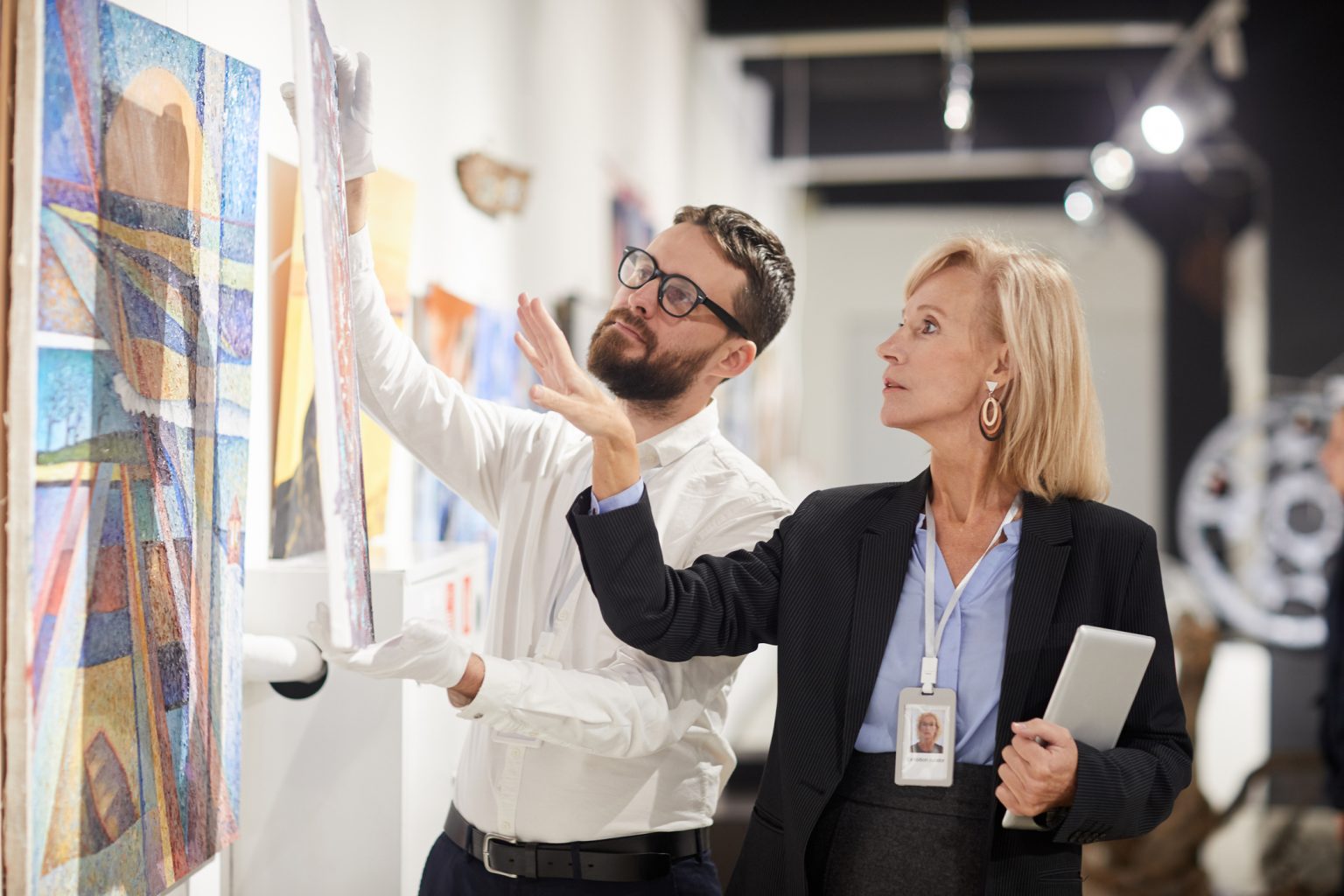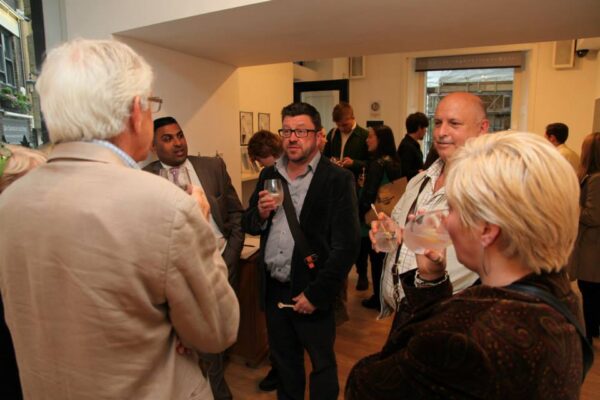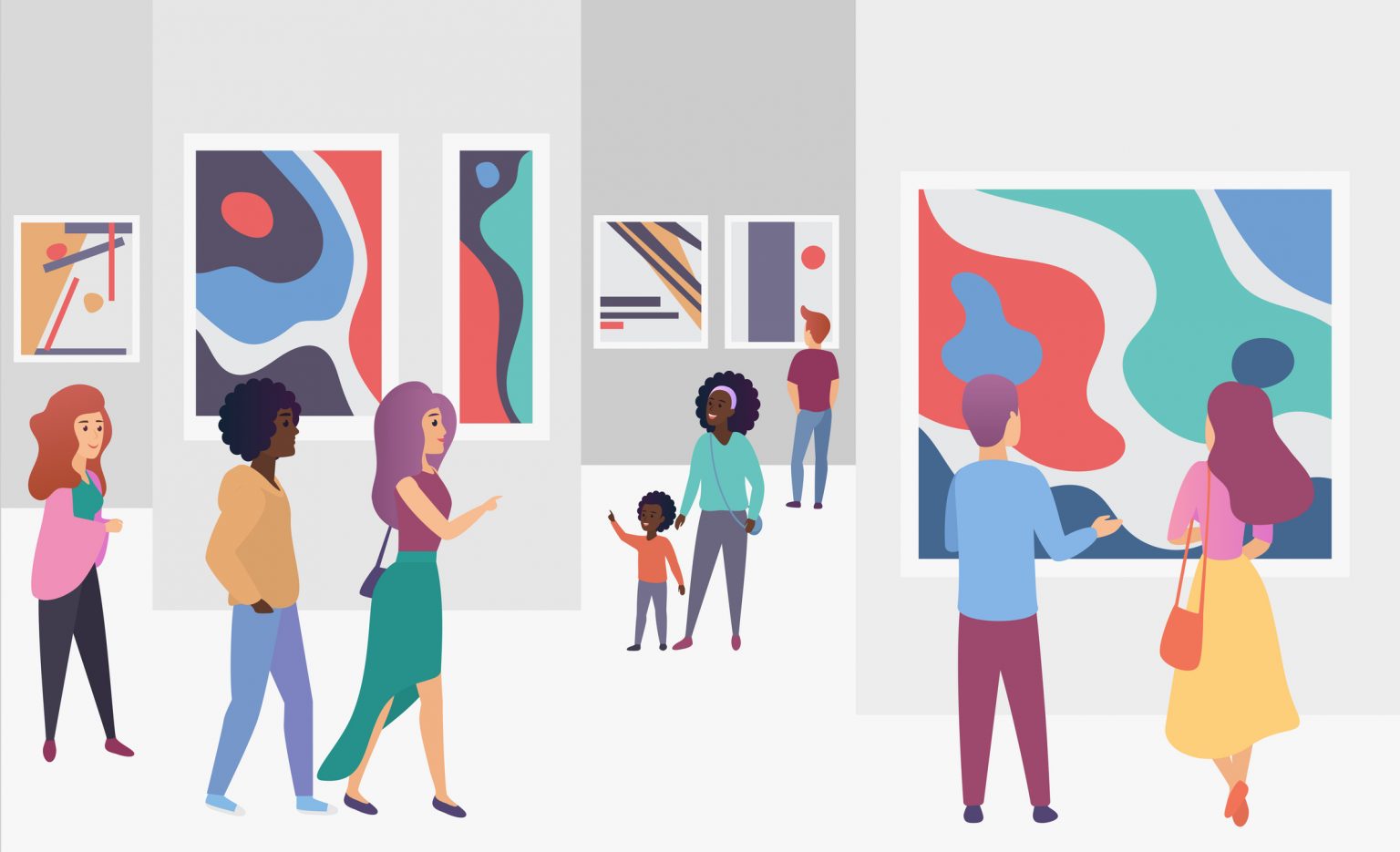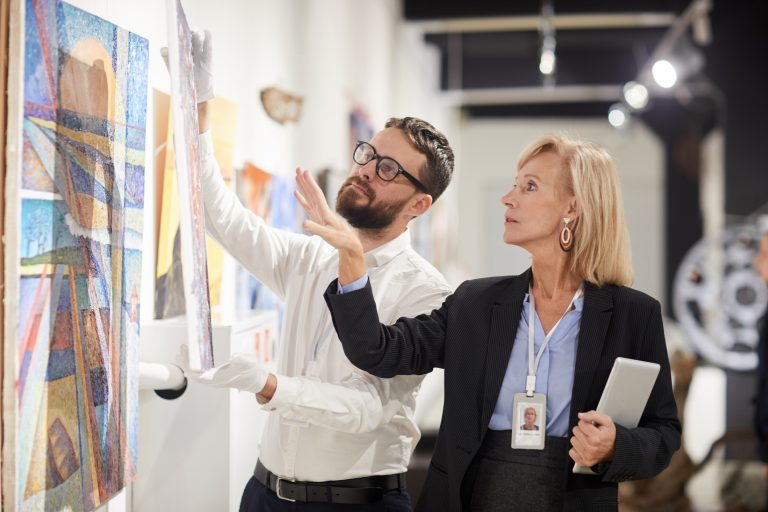Welcome to part 3 in our ‘Exhibiting your Art’ blog series – how to work with commercial galleries. So far the series has looked at getting started and holding your own exhibition, with future articles set to cover ‘submitting to group shows’ and ‘marketing’. For now, we’re going to discuss those important and extremely valuable relationships with commercial galleries, dealers, and curators.

How to get your work into an Art Gallery
Meeting a curator or getting your work seen by a commercial gallery is no mean feat! The most important tool here is the art of networking. Here are some ideas to get your foot in the door:
- Private views: Going to private views is a great way to network with potential curators and exhibition organisers, and to meet new people. If mingling doesn’t come easily, take a friend or fellow artist. This can boost your confidence and give you power in numbers. Turning up at private views alone, although brave, can leave you feeling like a bit of a lemon! Most importantly, try to strike conversation with new people… you never know who they might be.
- Making yourself visible: Get your work seen! Online, self-curated shows, competitions, social media – making yourself discoverable couldn’t be more important in this day and age, as curators will often do their own research and actively try to ‘find’ artists.
- Applying to gallery open calls: Galleries will often present open calls for exhibitions or representation. These can be great opportunities to get your work seen, but can also be costly. It’s best to avoid applying to every single opportunity that comes along, particularly if it involves a submission fee. You really need to consider whether the opportunity is relevant to you.
- Network, network, network: Recommendations are invaluable, and are an increasing way in which curators find artists – so your network is absolutely crucial. Make friends in your studio, go to artist meet-ups, put yourself out there. Working in your studio can be lonely – so make the effort to take part in social activities, or initiate your own – Even a weekly scrabble night at the studios can help with your artist networking!
- Open Studios: Taking part in open studios is a great way to get your art seen, and takes much less time and effort than putting on an exhibition. Try to get involved as often as possible, or if your studios don’t run them, take the initiative and get it going yourself!

A word on how NOT to get noticed
- Sending unsolicited work: The first thing many news artists think is a good way to get their foot in the door, is to send in portfolios, cold calling, or worse – sending an email with lots of loose jpg attachments. This method can often be a huge waste of your time, as often the recipient won’t even take a second look, let alone call you in to talk about your work. You’ll end up feeling disappointed and unmotivated when you don’t hear back. The reason for this is not because your work is bad, or you don’t have enough experience, but because the gallerist or curator simply doesn’t have the time to wade through unsolicited work – they are spending their time working with the artists that they already have.

How to know if a gallery is right for you
This is something that needs to be considered before contacting a gallery, or applying to open submission opportunities. Remember:
- Really research the artists they currently represent, and work out if there is a space there for your kind of work
- There’s no point approaching galleries that clearly don’t fit with your practice, or represent your values as an artist
- Scrutinise what they have to offer and establish whether the opportunities they present will be right for you and your art
- Never approach a gallery that you have not visited before – you need to be totally aware of who you’re talking to
What to expect from the gallery
It is extremely important to remember that your relationship with a gallery needs to work both ways. With all the networking and sweet-talking it can be easy to forget that you are an asset to that gallery, and they also need to prove to you that they will make your contract worth it. Things to expect from the gallery are:
- To market and promote your artwork regularly and actively
- Support your artistic career and provide you with guidance
- Endeavour to exhibit your work in solo or group shows as regularly as possible
- Take your work to relevant art fairs and events
- Make sales of artwork on your behalf
Of course, the gallery can’t promise to sell your artwork, but they should make a commitment to you as an artist. If you are going through this process at all, it’s because they believe in your work and future artistic career, so this should be obvious from the outset.
Most galleries will expect you to sign an agreement or ‘consignment’ (see below), so it is imperative that before this happens, you have absolute faith in the gallery to honour their side of the agreement. If not, you could end up with your work tied up in a gallery that does not make the effort to market, promote or actively sell your work.
What the gallery expects from you
Many galleries will require you to sign a consignment agreement, often stating that certain works will only be available for sale through them for a certain period of time. A lot of the time the consignment will involve:
- Agreeing to sell through the gallery alone
- Agreeing to sell work at the gallery’s set prices
- Agreeing to show all new work to the gallery first
- Agreeing to keep the gallery up to date with progression and future plans
It is important to note also that these days it is common practice for galleries to take 50% as a standard commission. Make sure you are absolutely clear about the consignment before signing it, and make sure you follow these steps before doing so:
- Read and reread every single word, and then again!
- Never sign a contract under pressure – it is your right to take the contract away for a few days to scrutinise it
- Ask questions for ANYTHING you’re unsure of – don’t panic about not understanding something or feeling stupid, this is absolutely not the case, and all artists will have been in the same position. Don’t know what a certificate of authenticity is? then ask. Not sure about the terms surrounding commission? you guessed it… ask! Clarity is everything.
- Be absolutely certain of the duration of your contract, and the notice period for both parties

To Summarise…
Working with curators can be a delicate business, particularly when you remember that they are also creative people whose ‘vision’ may or may not correspond with your own! It can be a difficult but extremely rewarding process… and remember that both of you are building a relationship on mutual respect. GOOD LUCK!
Read the next part in the series, ‘Submitting to group shows‘.







